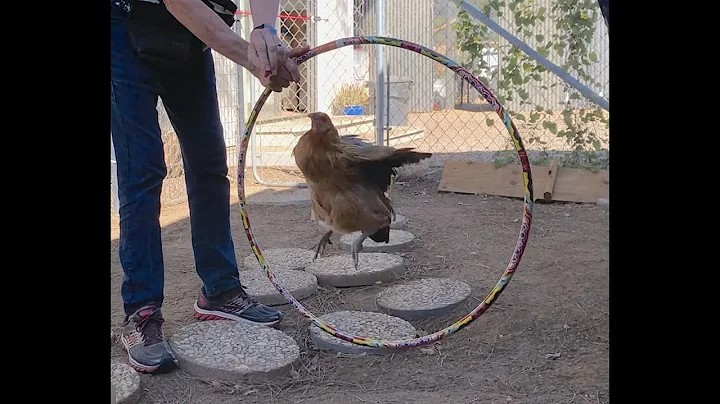Understanding Plantar Fasciitis: Causes, Symptoms, and Treatments
Table of Contents
- Introduction: What is Plantar Fasciitis?
- Etiology of Plantar Fasciitis
- Risk Factors for Plantar Fasciitis
- Anatomy and Pathophysiology of Plantar Fasciitis
- Signs and Symptoms of Plantar Fasciitis
- Diagnosis of Plantar Fasciitis
- Treatment of Plantar Fasciitis
- Rest and Avoidance of Offending Activity
- Pain Relief Measures
- Orthotics and Supportive Measures
- Injection Treatments
- Surgical Options
- Recovery and Rehabilitation for Plantar Fasciitis
- Prevention of Plantar Fasciitis
- Conclusion
🚶♂️ Introduction: What is Plantar Fasciitis?
Plantar fasciitis, also known as jogger's heel or tennis heel, is a foot condition characterized by recurrent heel pain. It is a common condition that affects up to 10 percent of the general population. In this article, we will explore the causes, symptoms, diagnosis, and treatment options for plantar fasciitis.
🔬 Etiology of Plantar Fasciitis
The causes of plantar fasciitis are multifactorial. They can include traumatic causes, such as foot injuries or falls, as well as issues with overuse. Changes in activity levels or footwear can also contribute to the development of plantar fasciitis.
💡 Risk Factors for Plantar Fasciitis
Certain individuals are more at risk for developing plantar fasciitis. Factors that increase risk include engaging in certain activities, such as running or walking excessively, and having certain medical conditions like spondyloarthropathies. Females also outnumber males two to one in terms of incidence of plantar fasciitis.
🔍 Anatomy and Pathophysiology of Plantar Fasciitis
To understand why plantar fasciitis occurs, it is important to examine the anatomy and pathophysiology of the condition. The plantar fascia, a fibrous band of tissue that provides support and tension through the arch of the foot, plays a crucial role. In plantar fasciitis, there are microtears in the plantar fascia, leading to pain and discomfort, particularly at the insertion point on the heel bone.
😣 Signs and Symptoms of Plantar Fasciitis
The hallmark symptom of plantar fasciitis is heel pain, which is often sharp and intense. The pain is commonly localized to the inferior side of the heel bone and can radiate proximally in severe cases. Pain is typically worse with the first steps in the morning or after periods of inactivity. Walking barefoot or on hard surfaces can exacerbate the pain. Other symptoms may include swelling, foot stiffness, and aching of the heel.
🔬 Diagnosis of Plantar Fasciitis
Diagnosing plantar fasciitis is primarily based on patient history and physical examination. Imaging, such as X-rays or ultrasound, may be used to rule out other conditions or assess the severity of the condition. Blood work may be performed to evaluate for underlying medical conditions. However, plantar fasciitis is often diagnosed clinically without the need for extensive imaging.
💊 Treatment of Plantar Fasciitis
The treatment of plantar fasciitis aims to reduce pain, promote healing, and prevent recurrence. It typically involves a combination of conservative measures and, in severe cases, more invasive options. Rest and avoidance of the offending activity are crucial to allow the plantar fascia to heal. Pain relief measures may include ice application or the use of non-steroidal anti-inflammatory drugs (NSAIDs). Orthotics, supportive footwear, and stretching exercises can alleviate strain on the plantar fascia. In some cases, injections or surgical options may be considered.
🤕 Recovery and Rehabilitation for Plantar Fasciitis
Recovery from plantar fasciitis can vary depending on the individual and the severity of the condition. It is important to follow a rehabilitation program that includes gradual return to activity, stretching exercises, and strengthening of the foot and calf muscles. Physical therapy may be recommended to aid in the recovery process and prevent future injury.
🚫 Prevention of Plantar Fasciitis
Preventing plantar fasciitis involves taking proactive measures to reduce the risk of developing the condition. This includes maintaining a healthy weight, wearing supportive footwear, properly warming up before physical activity, and gradually increasing exercise intensity. Regular stretching and strengthening exercises for the feet and lower legs can also help prevent plantar fasciitis.
🔚 Conclusion
Plantar fasciitis is a common foot condition characterized by recurrent heel pain. While it can cause discomfort and impact daily activities, proper diagnosis and treatment can lead to effective management and recovery. Understanding the causes, symptoms, and treatment options for plantar fasciitis can help individuals seek appropriate care and prevent future occurrences.
Highlights:
- Plantar fasciitis is a foot condition involving recurrent heel pain.
- Causes include overuse, traumatic injury, and changes in activity or footwear.
- Key symptoms include sharp heel pain, worsened with first steps in the morning or after inactivity.
- Diagnosis is primarily clinical, with imaging used to rule out other conditions.
- Treatment involves rest, pain relief, orthotics, stretching exercises, and, in severe cases, injections or surgery.
- Recovery and prevention strategies focus on gradual return to activity and reducing risk factors.
FAQ: Frequently Asked Questions
Q: Can plantar fasciitis affect both feet?
A: Plantar fasciitis typically affects one foot, but in some cases, it can occur in both feet.
Q: How long does it take to recover from plantar fasciitis?
A: Recovery time can vary depending on the severity of the condition and individual factors. It may take several weeks to months to fully recover from plantar fasciitis.
Q: Can plantar fasciitis recur after treatment?
A: Yes, plantar fasciitis can recur if the underlying causes and risk factors are not addressed. Following appropriate preventive measures is important to reduce the risk of recurrence.
Q: Are there any home remedies for relieving plantar fasciitis pain?
A: Home remedies such as ice application, stretching exercises, and wearing supportive footwear can help alleviate plantar fasciitis pain. However, it is important to consult with a healthcare professional for proper diagnosis and treatment.
Q: Can obesity increase the risk of developing plantar fasciitis?
A: Yes, obesity can increase the risk of developing plantar fasciitis. Excess weight puts extra strain on the feet, leading to increased stress on the plantar fascia.
Q: Are there any exercises that can help prevent plantar fasciitis?
A: Regular stretching and strengthening exercises for the feet and lower legs can help prevent plantar fasciitis. Consult with a healthcare professional or physical therapist for specific exercises tailored to your needs.
Resources:







